Did you know that understanding the pecking order in your flock of chickens can lead to a happier, healthier, and more harmonious environment? In this blog post, we’ll take you on a journey to explore the intricacies of the pecking order and how you can effectively manage your flock by addressing factors like overcrowding, nutrition, and introducing new chickens.

Short Summary
- Understanding the pecking order in chickens can help prevent excessive pecking and bullying.
- Factors such as breed, age, size, individual personalities, and external parasites affect the pecking order of a flock.
- Creating a healthy coop environment with proper ventilation, temperature control, and distractions is essential for maintaining harmony among chickens.
Understanding the Pecking Order in Chickens
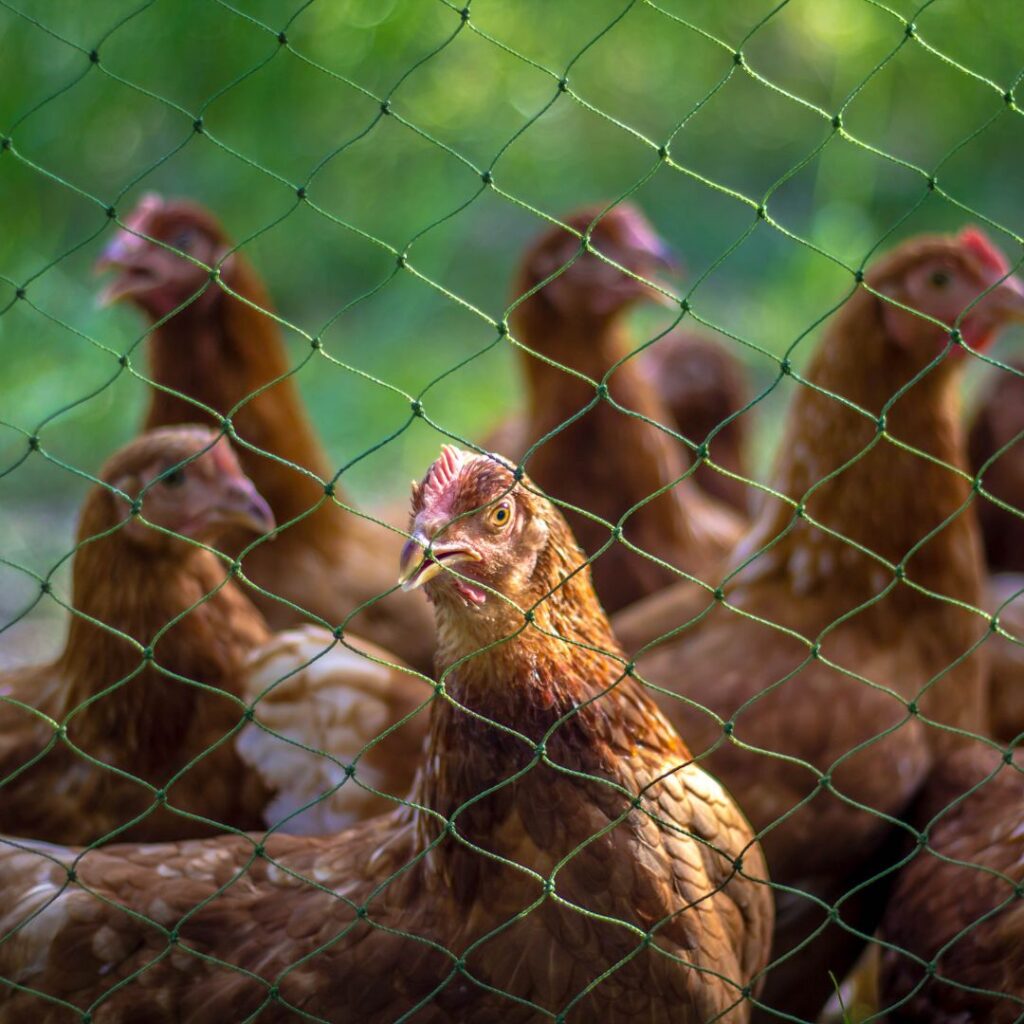
The pecking order is a natural occurrence in chicken flocks, where each bird establishes its social rank through various behaviors. Recognizing pecking order behaviors and understanding its purpose can help you maintain a harmonious backyard flock and prevent excessive pecking or bullying.
By understanding the pecking order, you can identify the dominant birds in the flock and ensure that they remain.
The Purpose of Pecking Order
The pecking order serves a purpose in maintaining order and resource allocation within the flock. For instance, having enough nesting boxes in the coop for your hens to lay eggs can help reduce pecking issues. Additionally, locating nesting boxes away from light sources can reduce instances of chickens pecking each other during egg-laying.
Understanding the pecking order can help stop chickens from pecking each other excessively. By providing adequate nesting boxes and ensuring the proper environment, you can minimize the chances of chickens pecking each other in nesting boxes.
Recognizing Pecking Order Behaviors
Pecking order behavior is an intentional act undertaken by a chicken to assert its dominance over weaker chickens, often through aggressive behavior like pecking or feather picking. Some typical behaviors associated with the pecking order include pecking those in direct competition and inhibiting access to food and water for flock mates.
It’s important to distinguish between normal pecking-order behavior and bullying. Pecking-order behavior is characterized by minimal aggression. It is of fleeting duration, whereas bullying can be attributed to various causes, including boredom and stress, but never to establish a pecking order.
Recognizing these behaviors and their underlying causes can help you maintain a harmonious and healthy flock.
Factors Affecting Pecking Order
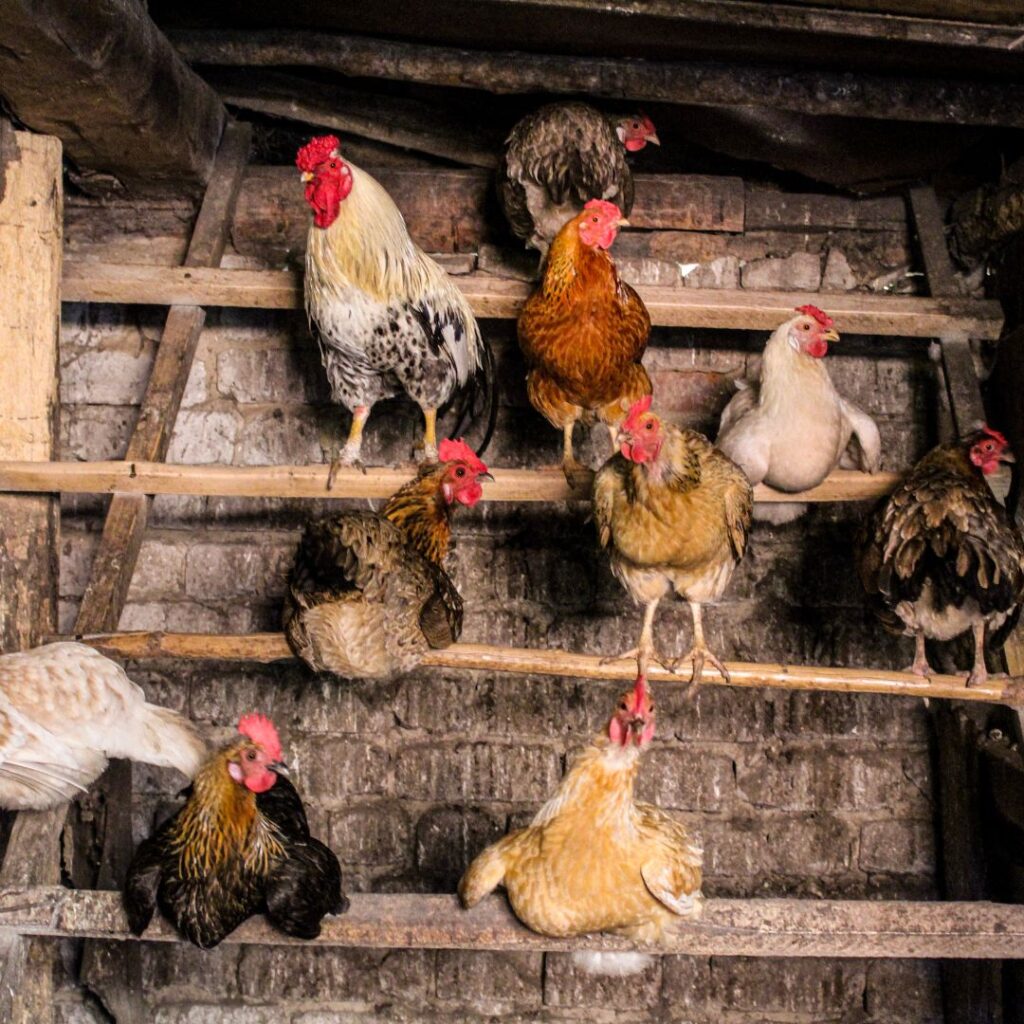
Several factors can influence the pecking order of chickens, such as breed, age, size, and individual personalities. External parasites can also cause discomfort and lead to increased chicken peck behavior. And sometimes you just have a bully chicken that needs to be redirected.
By understanding and addressing these factors, you can help create a more harmonious environment for your flock.
Breed Differences
Different chicken breeds may display varying levels of aggression and dominance, which can impact the pecking order. For instance, some breeds may be inherently more aggressive, while others may be more submissive. It’s essential to consider the breed’s temperament when formulating a pecking order within a flock, as understanding these factors can help stop chickens from pecking each other excessively.
Being aware of breed differences can help you better manage your flock and prevent issues related to pecking order and bullying. You may find that some breeds are naturally more compatible with each other, leading to a more harmonious and happy flock.
Age and Size
Age and size are crucial in determining a chicken’s position in the pecking order. The pecking order is established when chickens are as young as three days old. Generally, larger chickens are more dominant than smaller chickens due to their greater ability to protect themselves and their resources.
Understanding the influence of age and size on the pecking order can help you manage your flock more effectively. By being aware of how these factors affect pecking behavior, you can take the necessary steps to reduce instances of chickens pecking each other and maintain a harmonious environment for your birds.
Individual Personalities
Individual personalities can also impact the pecking order, with some chickens being naturally more dominant or submissive, showcasing their natural chicken behavior. Dominant chickens typically display assertive and aggressive behavior, whereas submissive chickens are more likely to be timid.
To effectively manage chickens with disparate personalities, allocating sufficient space for each chicken to have its area is crucial, as this can help decrease the likelihood of bullying. Additionally, providing plenty of distractions, such as toys and treats, can assist in keeping chickens entertained and reduce the likelihood of pecking.
Identifying and Preventing Chicken Bullying
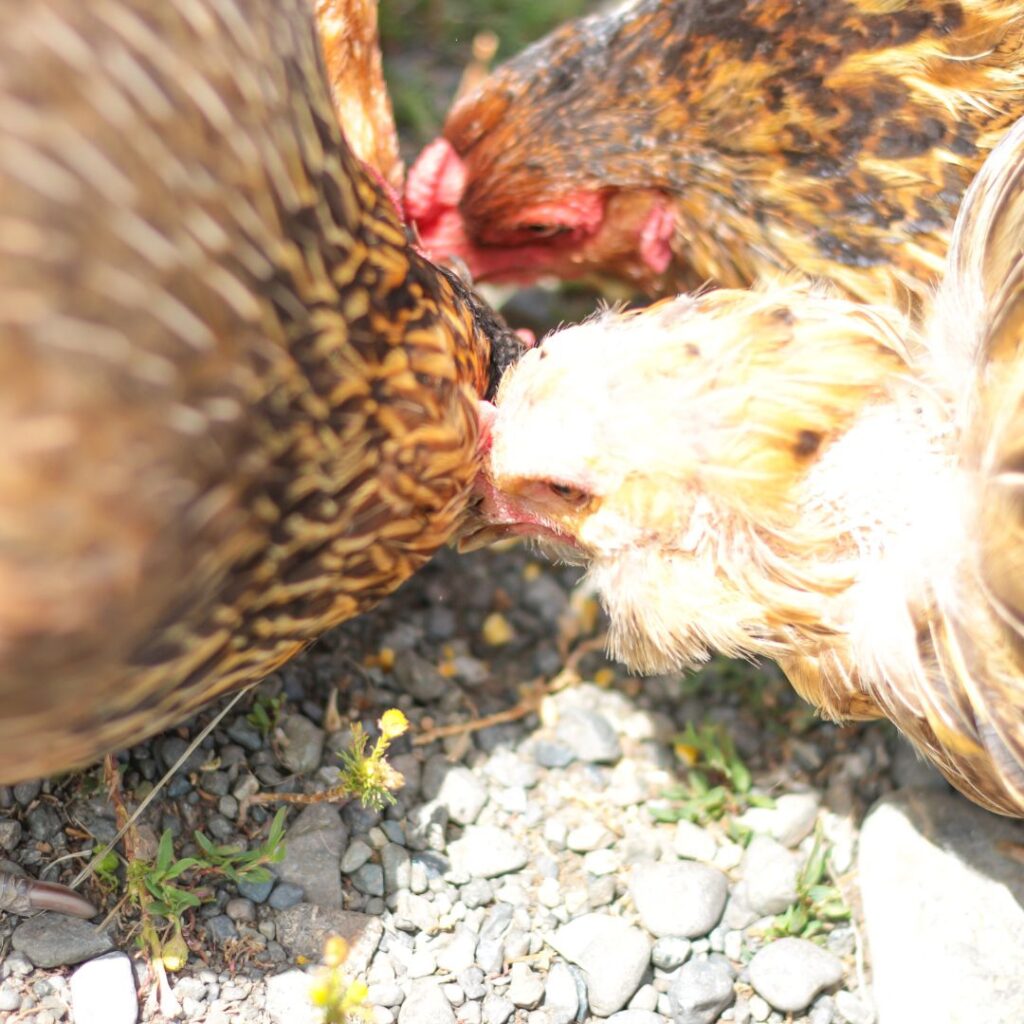
Identifying signs of chicken bullying is essential for maintaining a harmonious flock. By recognizing these signs and addressing issues like overcrowding and nutrition, you can prevent aggressive pecking and ensure the well-being of your birds.
It is important to be aware of the signs of bullying, such as one bird chasing another or even plucking its own feathers.
Signs of Bullying
Signs of bullying in chickens include excessive pecking, feather plucking, and preventing access to food and water. Indications of chickens being bullied may include missing feathers, weight loss, cowering demeanor, decreased egg production, evidence of blood or trauma, aggression towards other flock members, listlessness, and variations in pecking order or flock dynamics.
Bullying can result in stress, injury, and even death in chickens. By being vigilant and addressing bullying behavior promptly, you can prevent further harm to your flock and ensure a healthier, more harmonious environment.
Addressing Overcrowding
Overcrowding can contribute to chicken pecking and bullying, as chickens may feel the need to compete for limited resources. To ensure adequate space and resources for each chicken, it’s essential to guarantee that the coop is sufficiently large, provide enough food and water for all chickens, and provide adequate perches and nesting boxes.
Addressing overcrowding can minimize instances of pecking and bullying, leading to a more harmonious and stress-free environment for your flock. Providing ample space and resources for each bird is essential for well-being and happiness.
Ensuring Proper Nutrition
Inadequate nutrition can lead to aggressive behavior and pecking among chickens. To prevent chickens from pecking at each other due to nutrient deficiencies, providing a balanced diet containing all necessary nutrients and a consistent freshwater supply is essential.
You can help reduce aggressive pecking and maintain a healthier, more harmonious flock by ensuring proper nutrition. Providing a balanced diet and clean water is crucial for the well-being of your chickens and can make a significant difference in their behavior.
Creating a Healthy Coop Environment
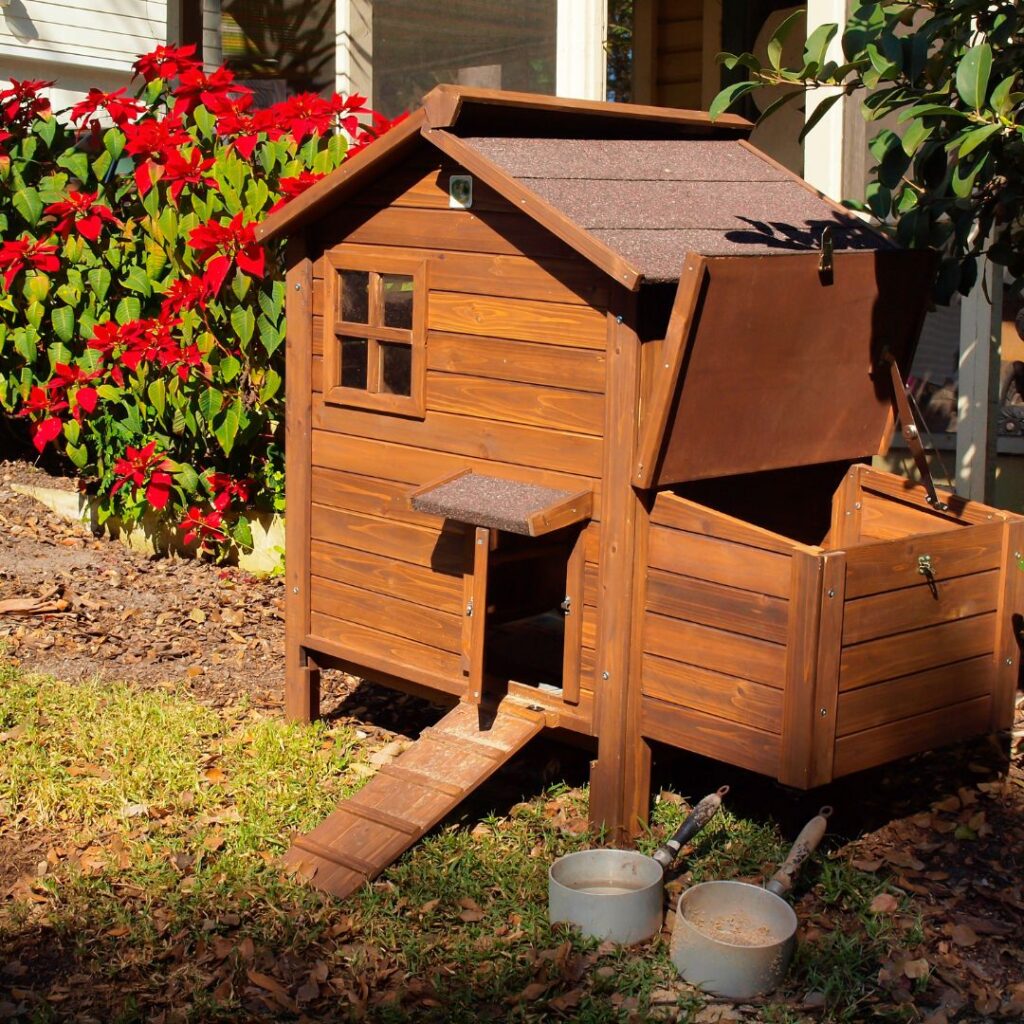
A healthy chicken coop environment is essential for the well-being of your chickens. You can create a comfortable and stress-free environment for your flock by ensuring proper ventilation and temperature control and providing distractions. This will reduce the likelihood of aggressive pecking and bullying.
Ventilation and Temperature Control

Maintaining a well-ventilated and temperature-controlled coop is crucial for the comfort and health of your chickens. Proper ventilation helps curb the spread of disease, while appropriate temperature regulation can help reduce stress levels. For brooding chicks, a temperature of 95 degrees Fahrenheit is recommended.
To ensure adequate ventilation and temperature control in your coop, ensure it has appropriate airflow and maintain a comfortable temperature for your birds. Additionally, artificial lighting using red or infrared bulbs can help prevent chicken pecking caused by overheating.
Providing Distractions
Providing distractions for your chickens can help keep them entertained and reduce instances of pecking due to boredom. Some of the most effective distractions for chickens include bales of hay or straw, tree branch roosts, old chairs, ladder roosts, hanging a mirror, setting up a sheltered dust bath area (more on dust baths), providing piles of leaves, straw, or hay, and using chicken toys (see hanging cabbage treat).
By offering a variety of distractions, you can help keep your chickens engaged and occupied, reducing the amount of time they spend pecking each other. This can lead to a more harmonious and stress-free environment for your flock.
Managing Injuries and Isolating Chickens
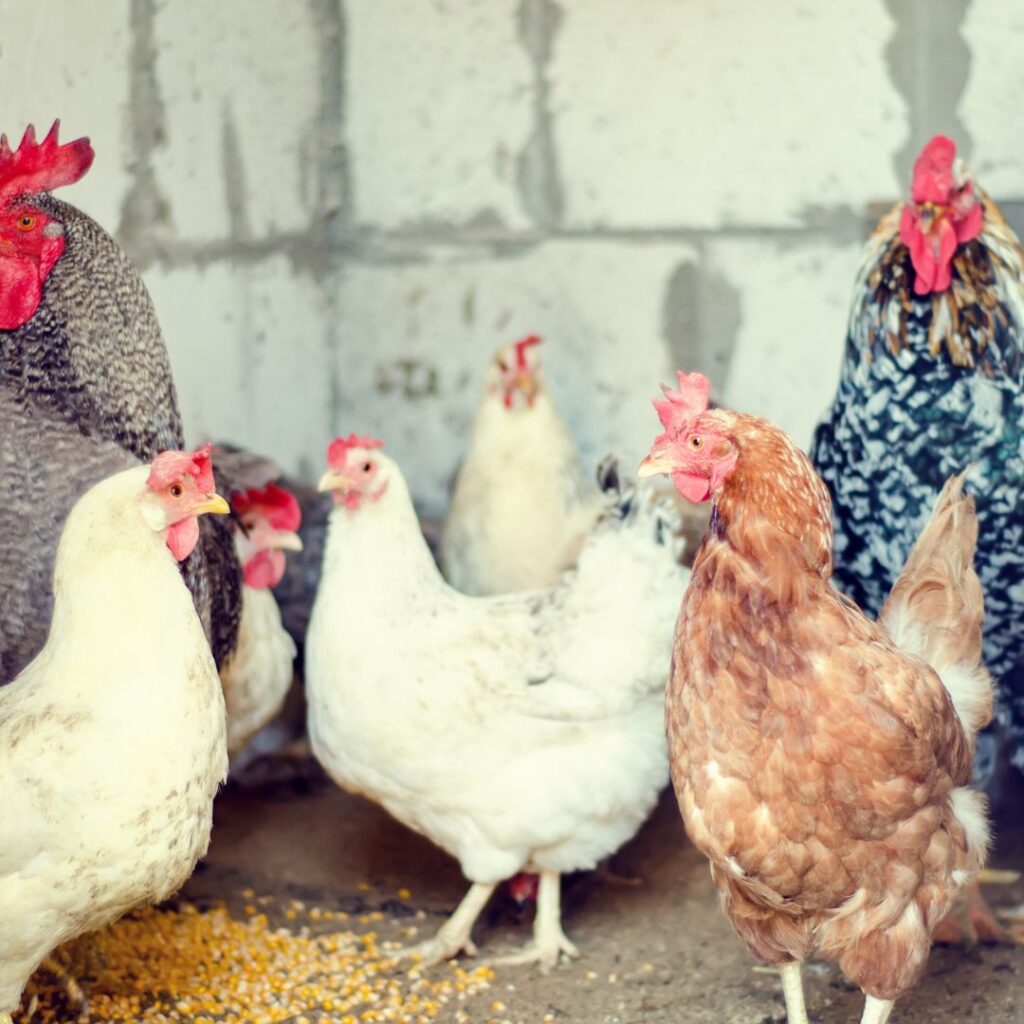
Injuries caused by pecking and bullying can be a serious issue in your flock. By isolating injured chickens and providing proper care, you can prevent further harm and maintain a healthier, more harmonious environment for your birds. Immediately removing an injured chicken for treatment is crucial to prevent further harm, and it’s essential to separate wounded chickens from the rest of the flock.
It’s essential to create a warm, secure environment with adequate food and water for the injured bird while monitoring for any signs of infection and seeking veterinary assistance when necessary. By addressing injuries promptly and providing proper care, you can help ensure the well-being of your flock and minimize the risk of further bullying.
Introducing New Chickens to the Flock
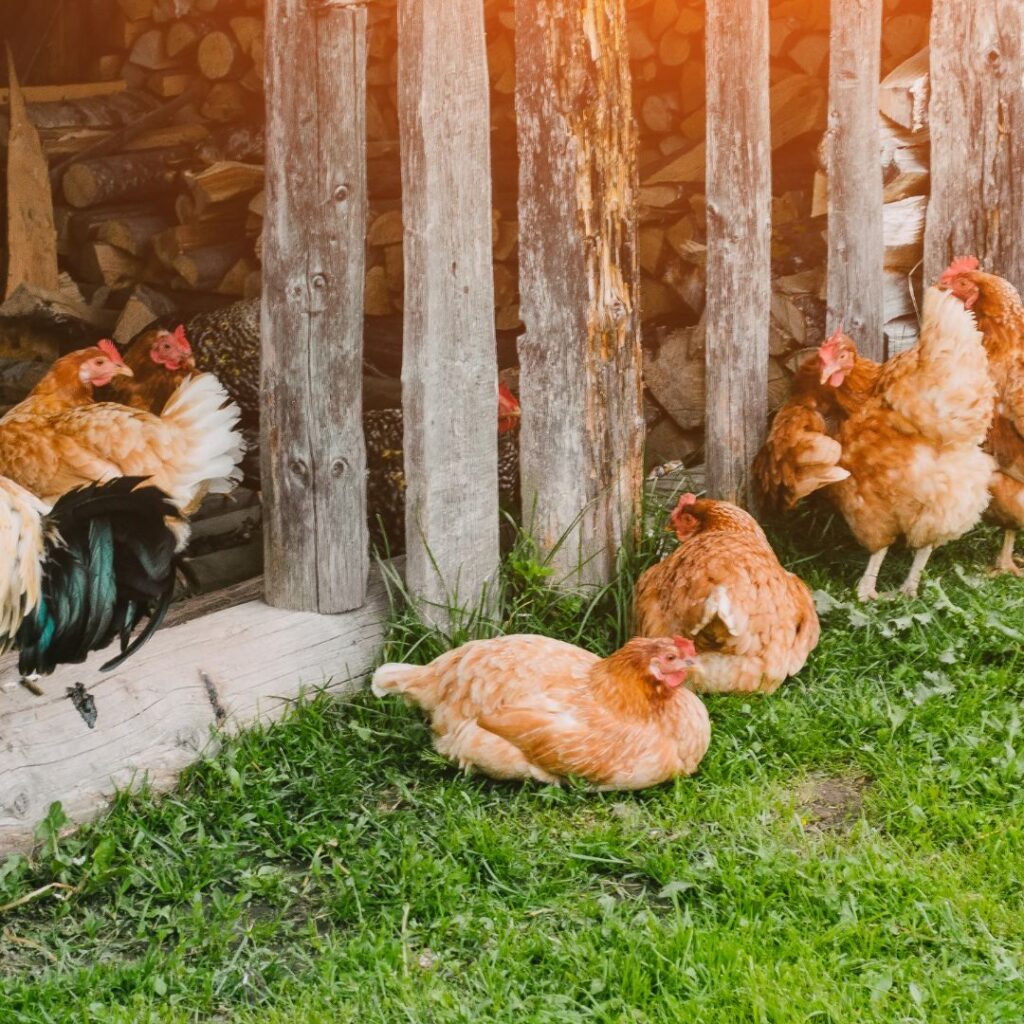
Introducing new chickens to your existing flock can be a delicate process, as it may disrupt the established pecking order. To minimize disruption and maintain a harmonious environment, it’s essential to introduce new chickens gradually and carefully.
Introduce new chickens one at a time and observe the flock’s behavior. Watch for signs of aggression, such as pecking, chasing, or fighting. If necessary, separate the chickens to avoid further aggression. Providing distractions, such as toys or treats, may also help the flock adapt to the new chickens.
Dealing with Persistent Aggressors
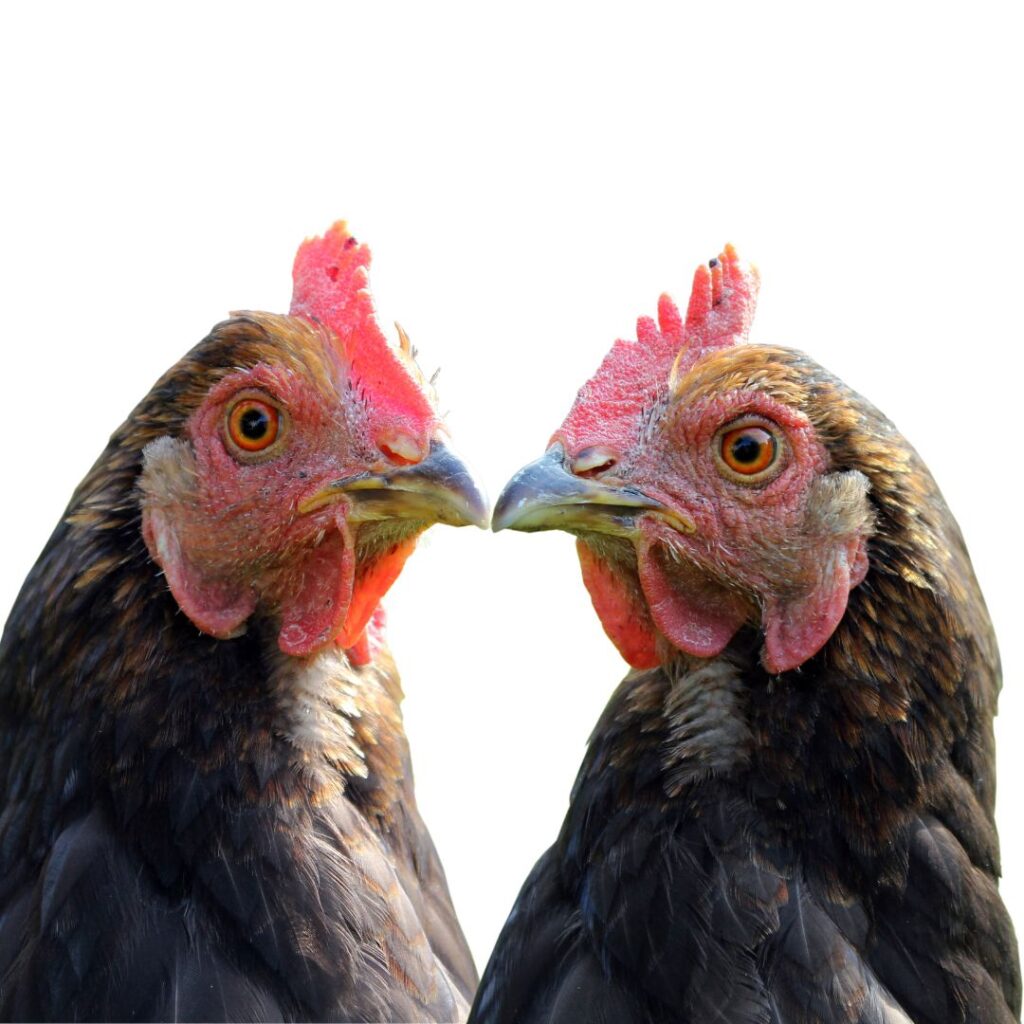
Dealing with persistent aggressors in your flock can be challenging, as they may continue to harm other chickens despite your best efforts. In such cases, isolating, rehoming, or finding humane alternatives may be necessary to prevent further bullying and maintain a healthy, harmonious environment.
Observe the chickens for peck damage and signs of aggression to identify persistent aggressors. Separate the aggressive chicken into a separate area or cage to prevent further harm to other chickens. If aggression continues, consider culling or relocating the chicken from your homestead through a humane alternative if rehoming is not feasible.
Conclusion
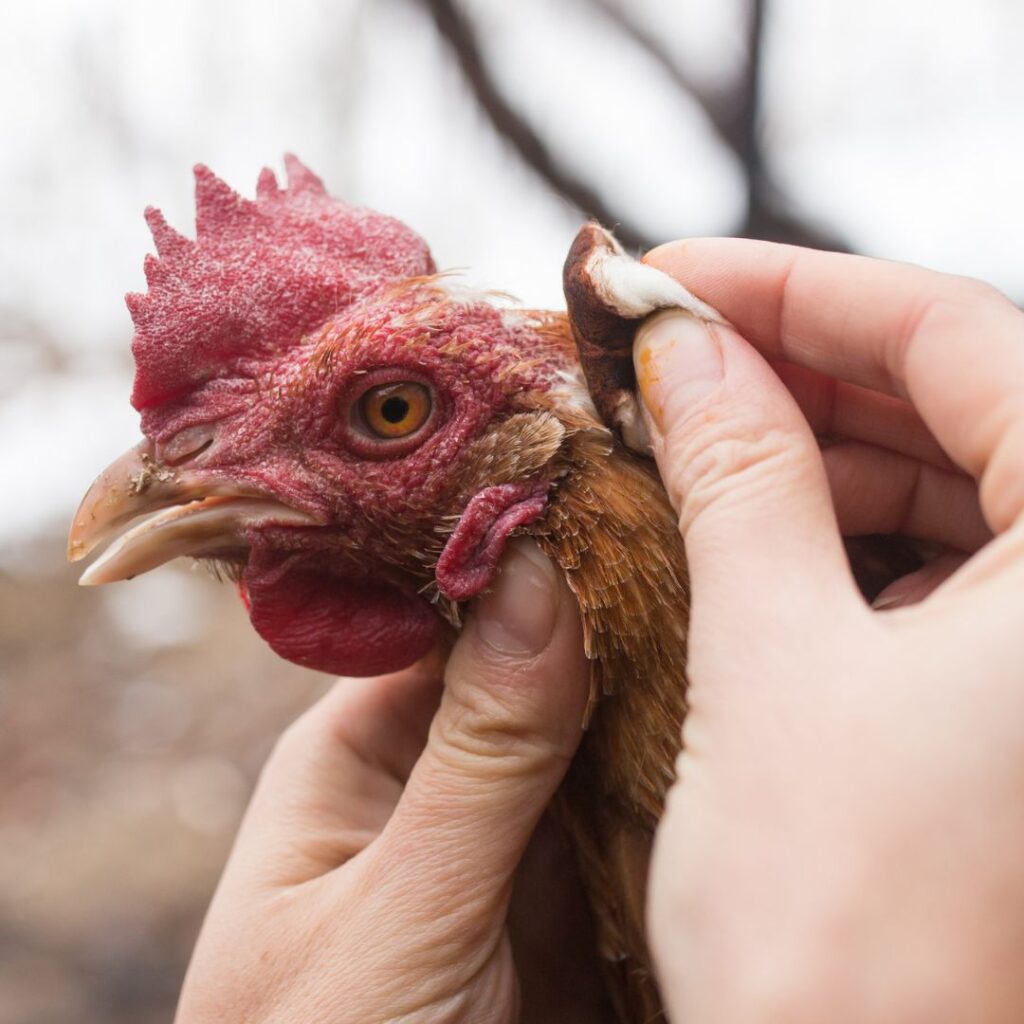
Understanding the pecking order and addressing factors contributing to aggressive pecking can help maintain a harmonious and healthy flock. Knowing breed differences, age and size factors, individual personalities, and ensuring proper nutrition, you can effectively manage your flock and prevent pecking order and bullying issues.
Remember, a happy chicken is a healthy chicken! And chicken swings can contribute to their happiness.
Summary
We’ve explored the importance of understanding the pecking order, the factors affecting it, and how to prevent chicken bullying and aggressive pecking. By ensuring proper ventilation and temperature control, providing distractions, and managing injuries and isolation, you can create a harmonious and healthy environment for your chickens.
Your commitment to understanding and managing your flock’s pecking order makes for a healthier group of chickens. Still, it will also provide you with the satisfaction of knowing you’re doing everything possible to ensure their well-being. Happy chicken keeping!
Frequently Asked Questions
What is the meaning of pecking order in humans?
The pecking order is a system of social hierarchy within a group,. It is where each person or entity holds a certain status, with those higher dominating over those below.
He knew his place in the pecking order. He knew there was an established hierarchy within the office he worked in.
What does bottom of the pecking order mean?
Being at the bottom of the pecking order means having the lowest status within a group. This often refers to being the sole individual without anyone to boss around.
This can be a difficult position, leading to feelings of isolation and lack of control. It can also be frustrating, as moving up the hierarchy without support can be challenging.
Where does the saying pecking order come from?
The phrase “pecking order” was first coined by Thorleif Schjelderup-Ebbe in 1921. He observed chickens establishing a social hierarchy based on who could peck at whom. The birds would peck each other to signal dominance and communicate their place in the group’s structure.
How do you stop chickens from pecking each other?
Providing chickens with alternatives (such as a “flock block) and encouraging them to go outside can help reduce pecking. Scattering treats in their yard will incentivize activity, which in turn helps them stay healthy.
What factors influence the pecking order in chickens?
The pecking order among chickens can be affected by various factors such as breed, age, size, and personality.

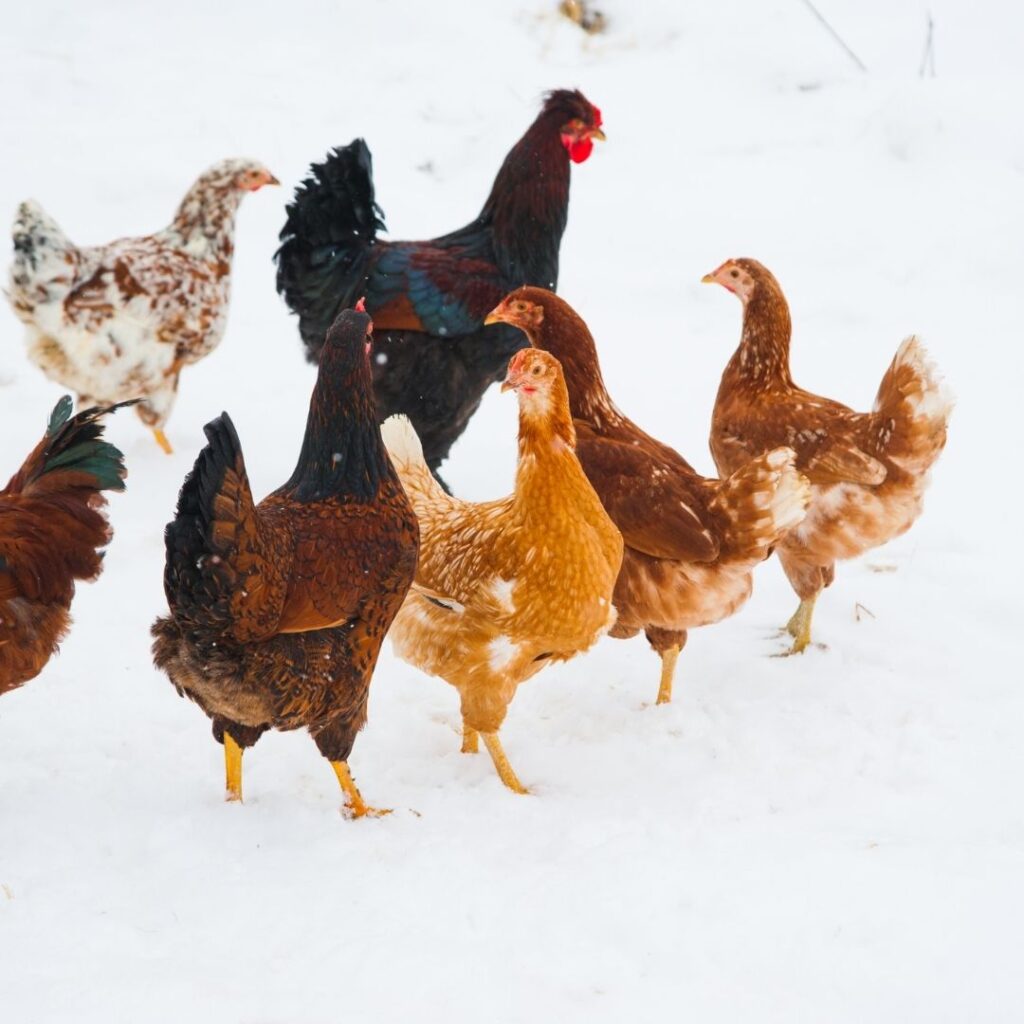
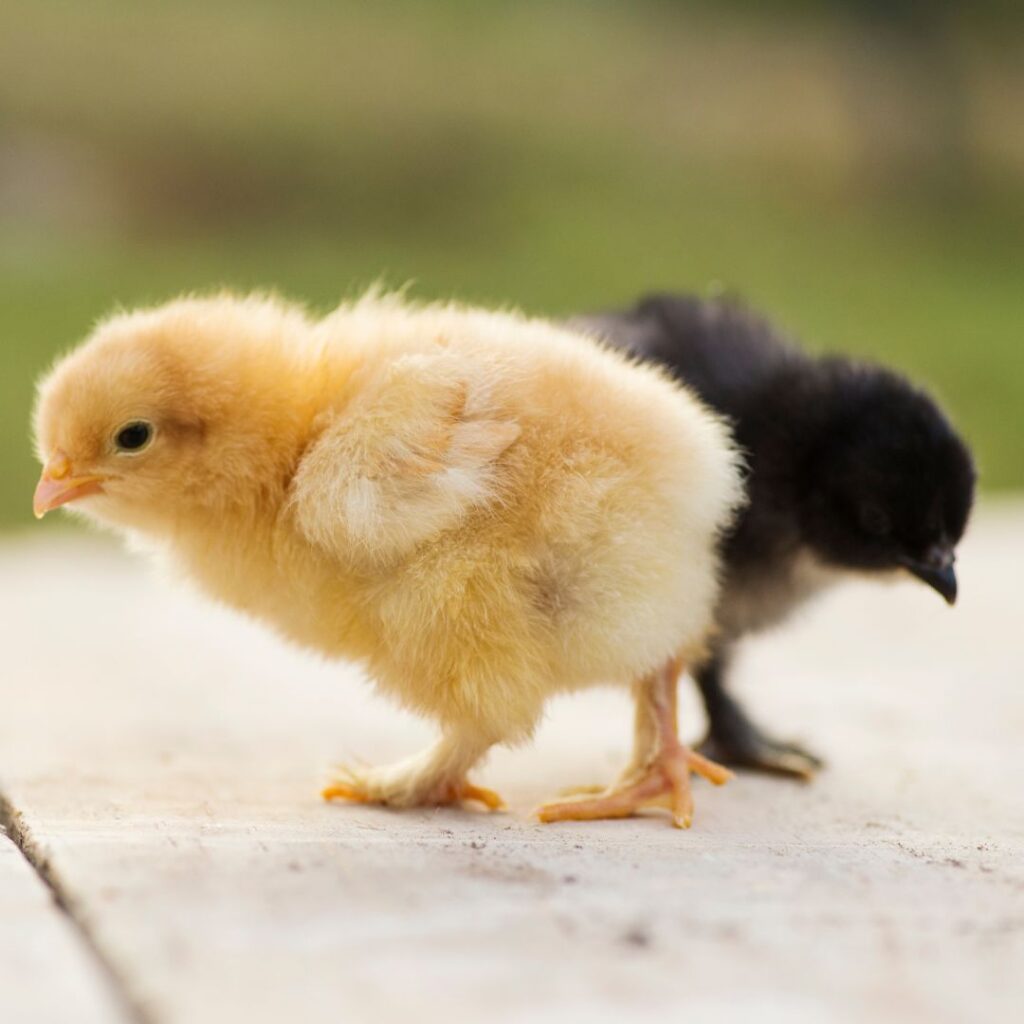
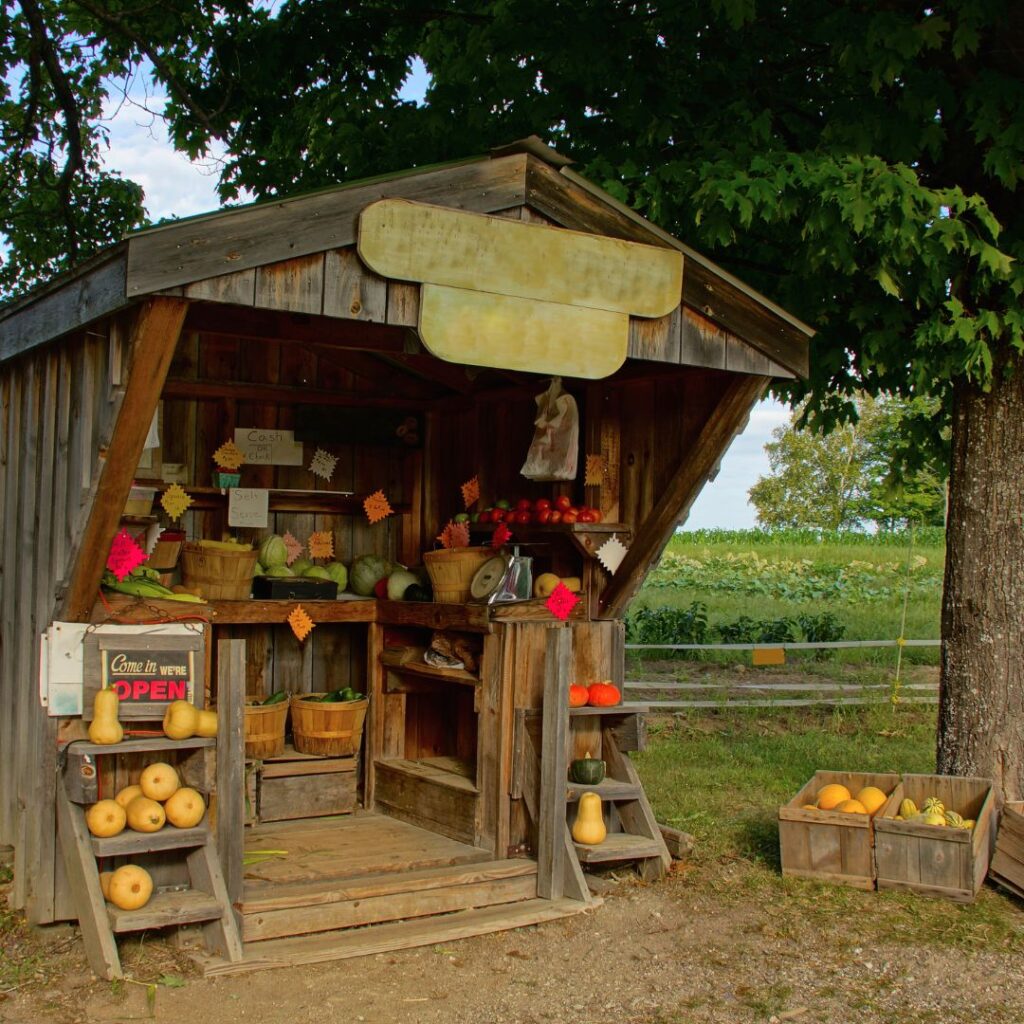
Pingback: Causes and Cures for Chicken Losing Feathers